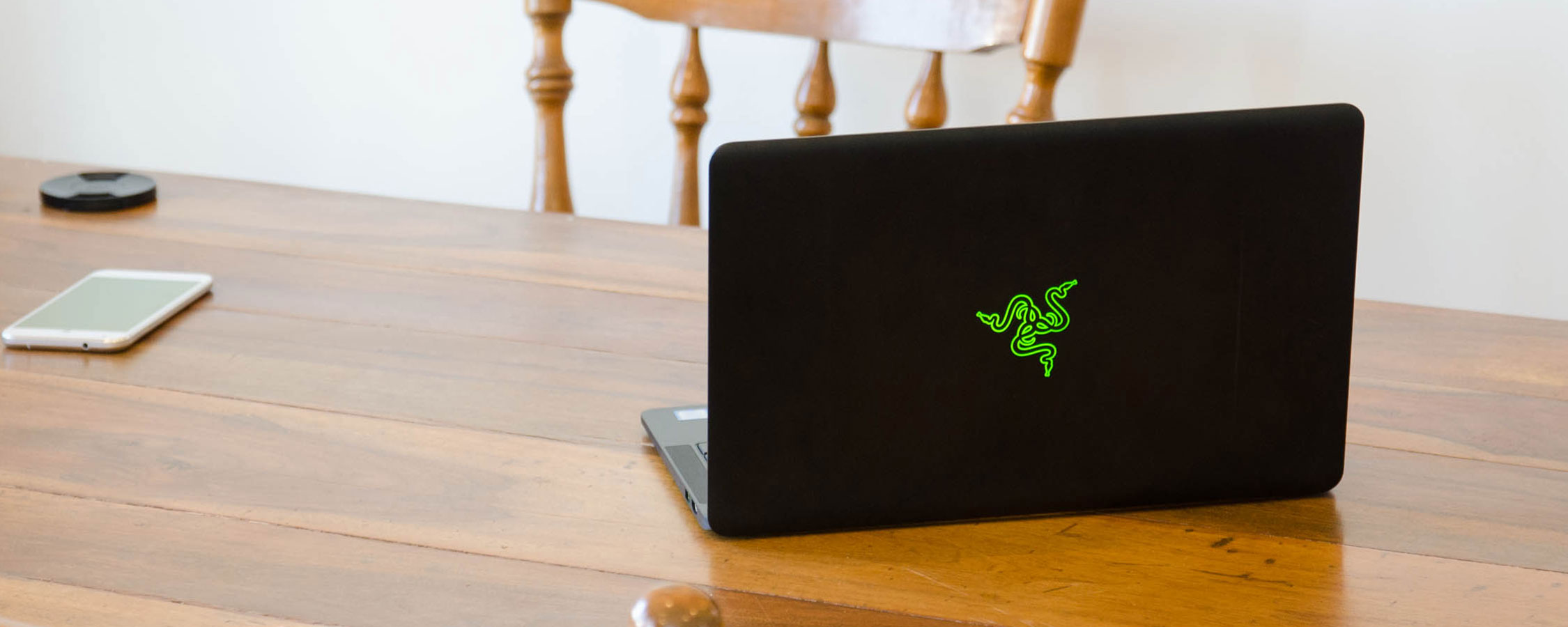Hardware Overview and System Performance
The hardware inside the Blade Stealth is typical for an ultraportable in early 2017. There's a high-end Intel Kaby Lake U-series processor, up to 16 GB of DDR4 memory, and up to 1 TB of SSD storage. Here's the full list of configurations available:
- Core i5 CPU, 8GB of RAM, 128GB SSD, 1440p non-touch display - $899.99
- Core i7 CPU, 8GB of RAM, 128GB SSD, 1440p touch display - $999.99
- Core i7 CPU, 16GB of RAM, 256GB SSD, 1440p touch display - $1249.99 (Reviewed)
- Core i7 CPU, 16GB of RAM, 512GB SSD, 1440p touch display - $1399.99
- Core i7 CPU, 16GB of RAM, 512GB SSD, 4K touch display - $1599.99
- Core i7 CPU, 16GB of RAM, 1TB SSD, 4K touch display - $1999.99
It's easy to discount the entry-level model, as for an extra $100, you'll upgrade the Blade Stealth from an Intel Core i5-7200U to a Core i7-7500U processor. The addition of a touchscreen is also handy, plus at $999.99 it's still competitively priced against other notebooks of this class.
My review unit was a mid-spec model, kitted out with an upgraded 16GB of RAM and a 256GB SSD. Many people will be fine with just 8GB of RAM and a 128GB SSD, particularly for basic workloads, but this $1,249 model should be popular among people that use their laptop for more than just web browsing. 16GB of RAM can come in handy particularly for creative workloads like heavy image and video editing, tasks which are assisted by the extra performance delivered by the Core i7-7500U over a Core i5 CPU.
Speaking of the Core i7-7500U, we're looking at a 14nm Kaby Lake CPU with two physical cores and four threads. This processor has a base clock of 2.7 GHz with a Turbo Boost frequency up to 3.5 GHz, plus Intel HD 620 graphics clocked at up to 1050 MHz. 4MB of L3 cache and a 15W TDP round out this processor's specifications.
The 7500U is the same processor I first reviewed in the Asus ZenBook 3, so I was expecting to see decent performance but no significant improvements compared to Skylake-based last-generation laptops.
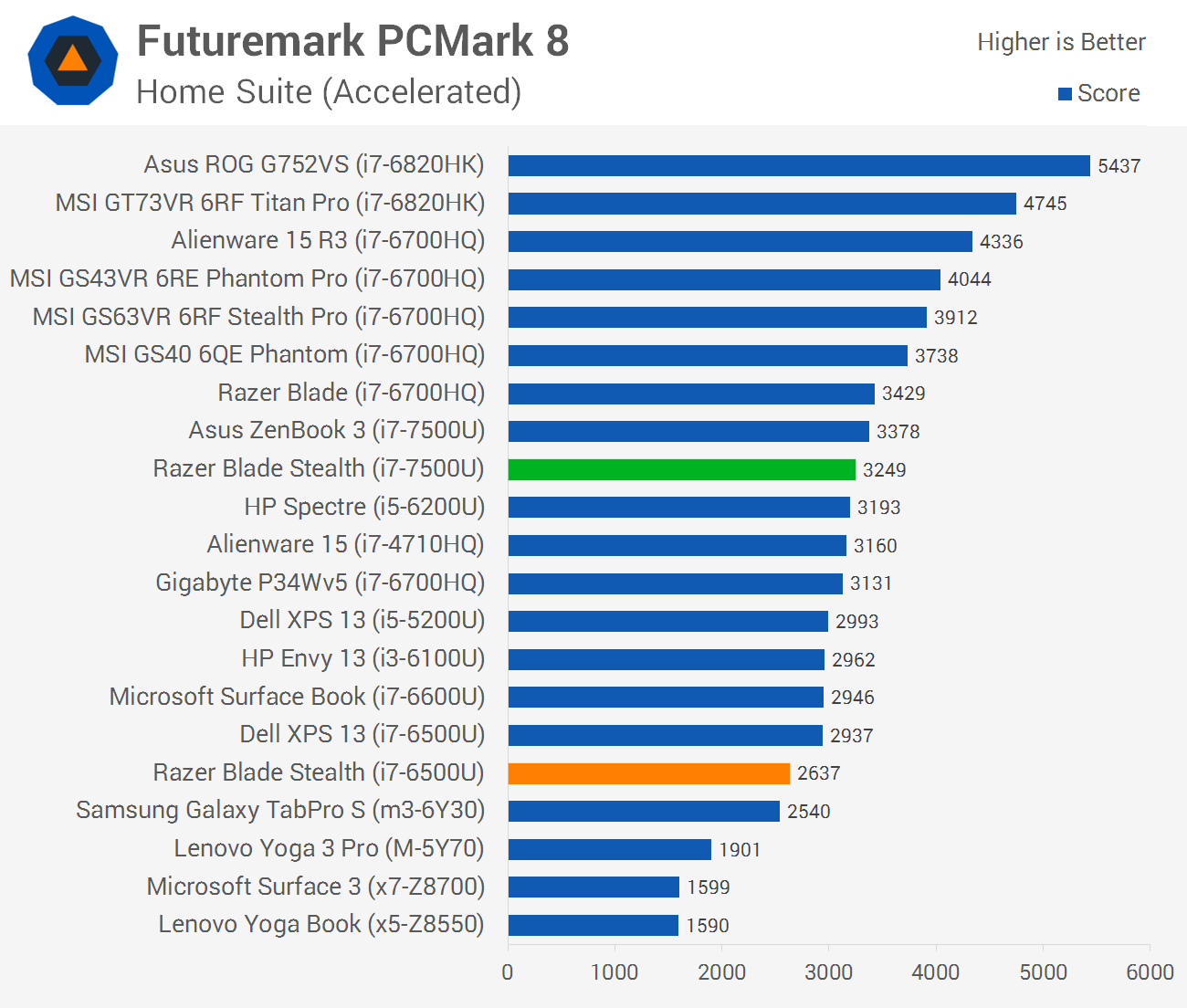
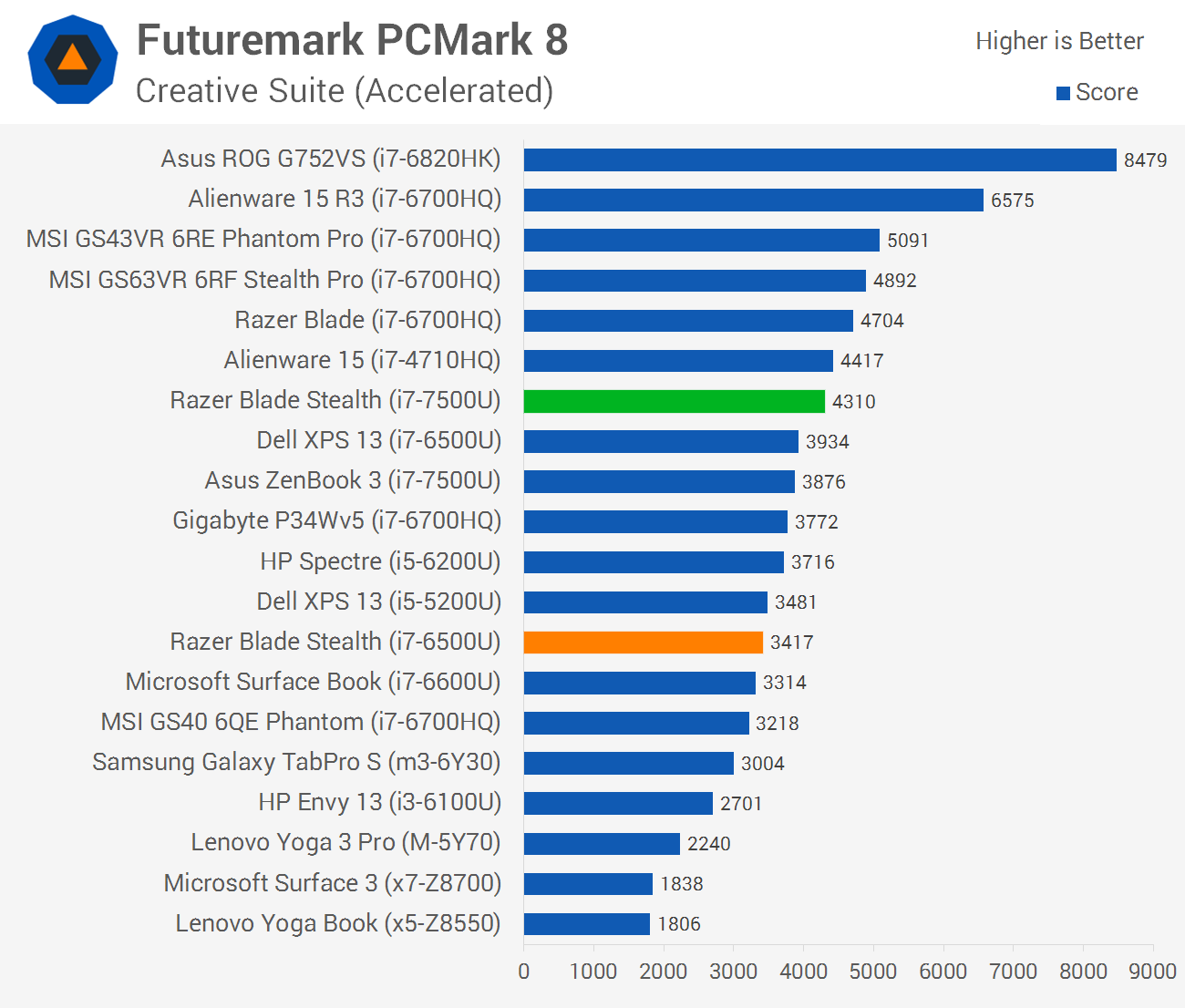
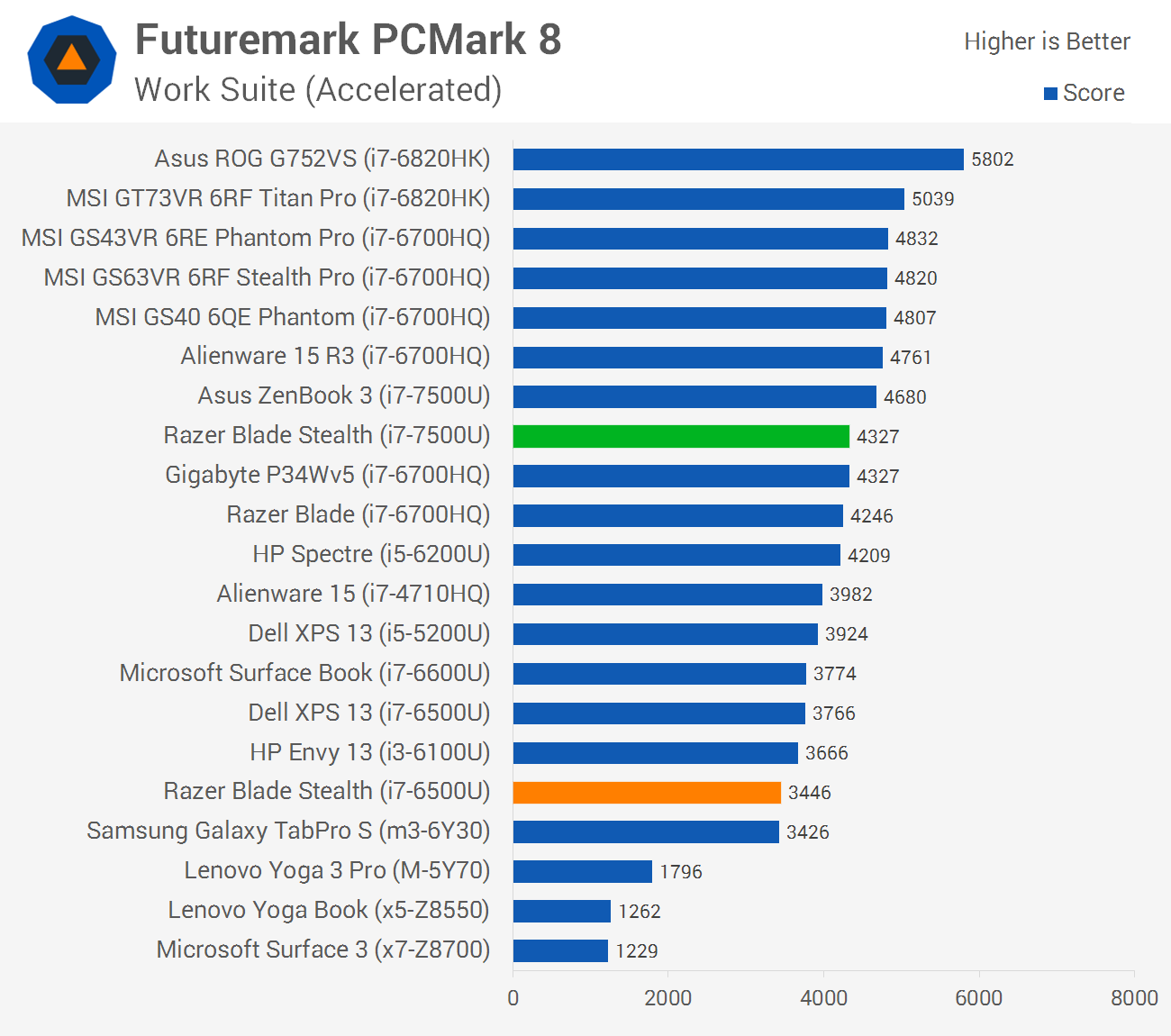
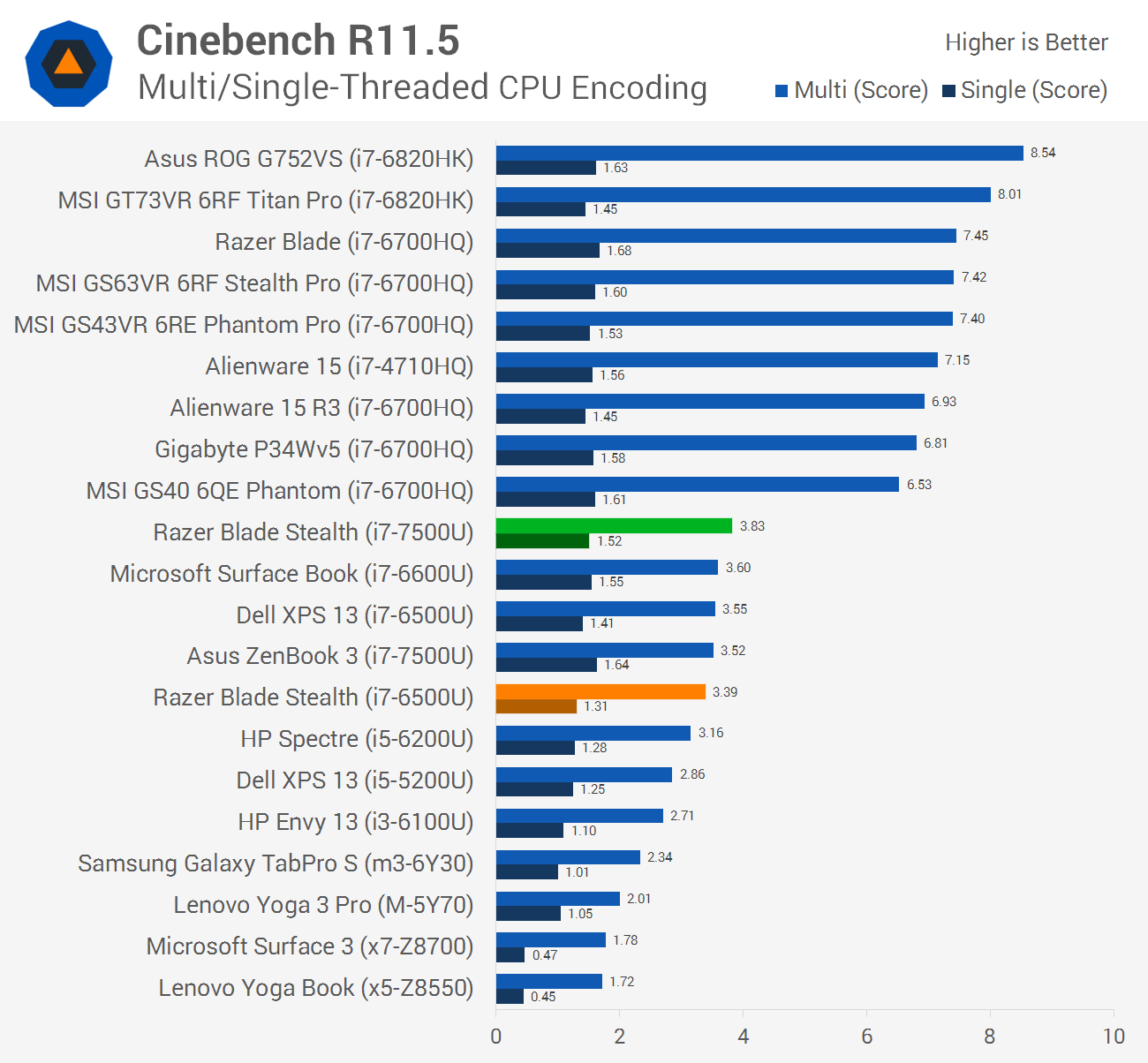
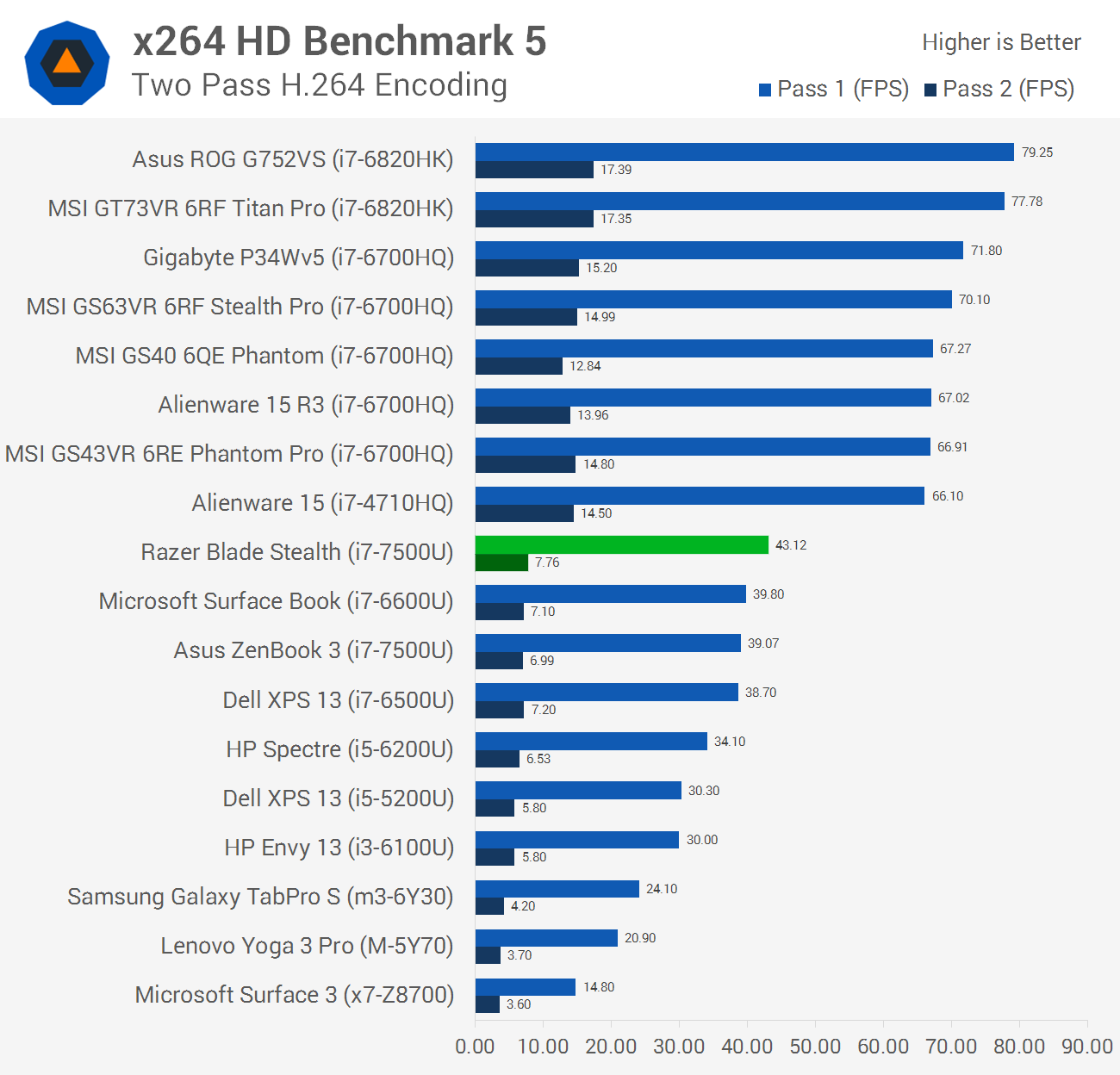
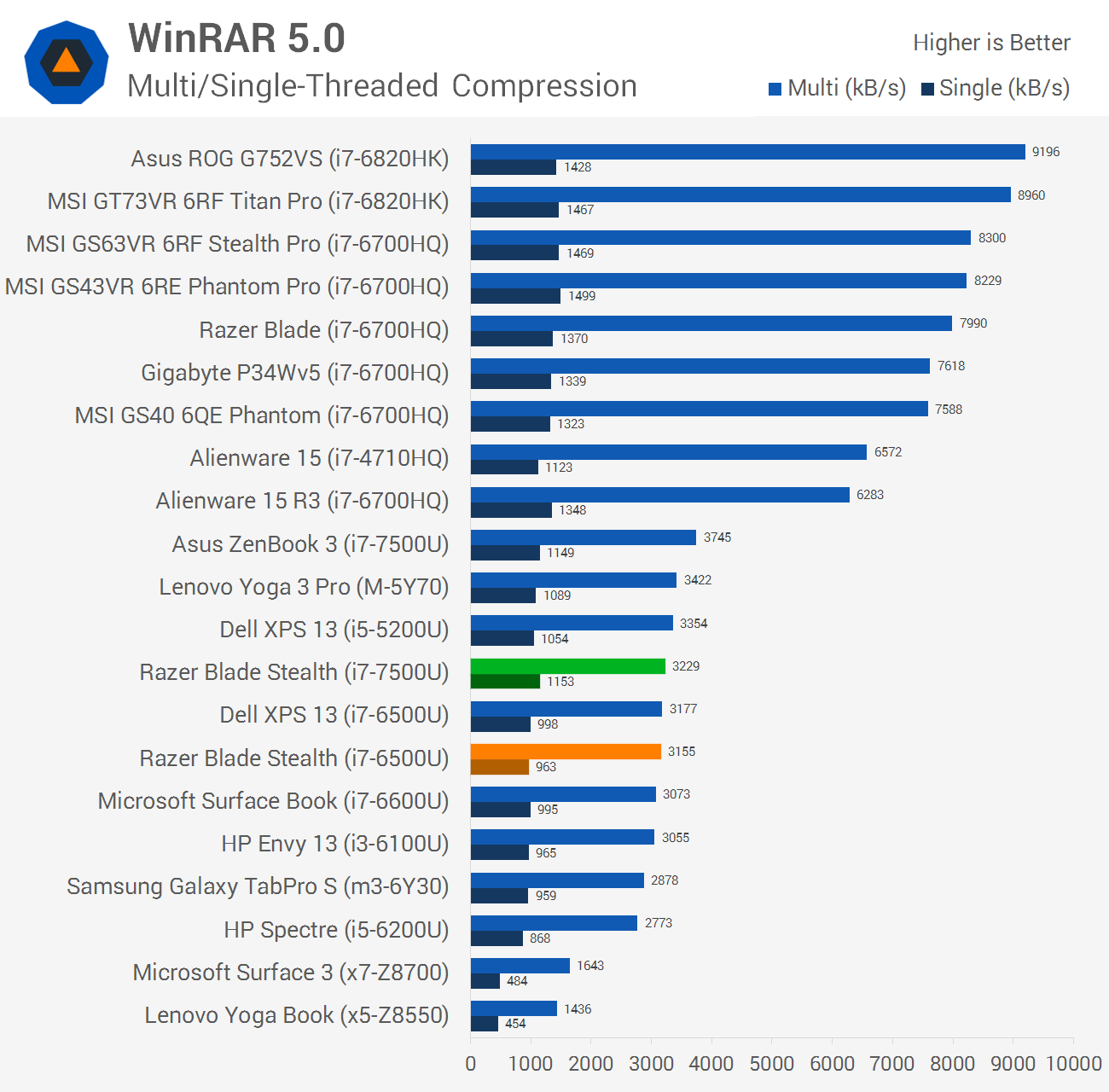
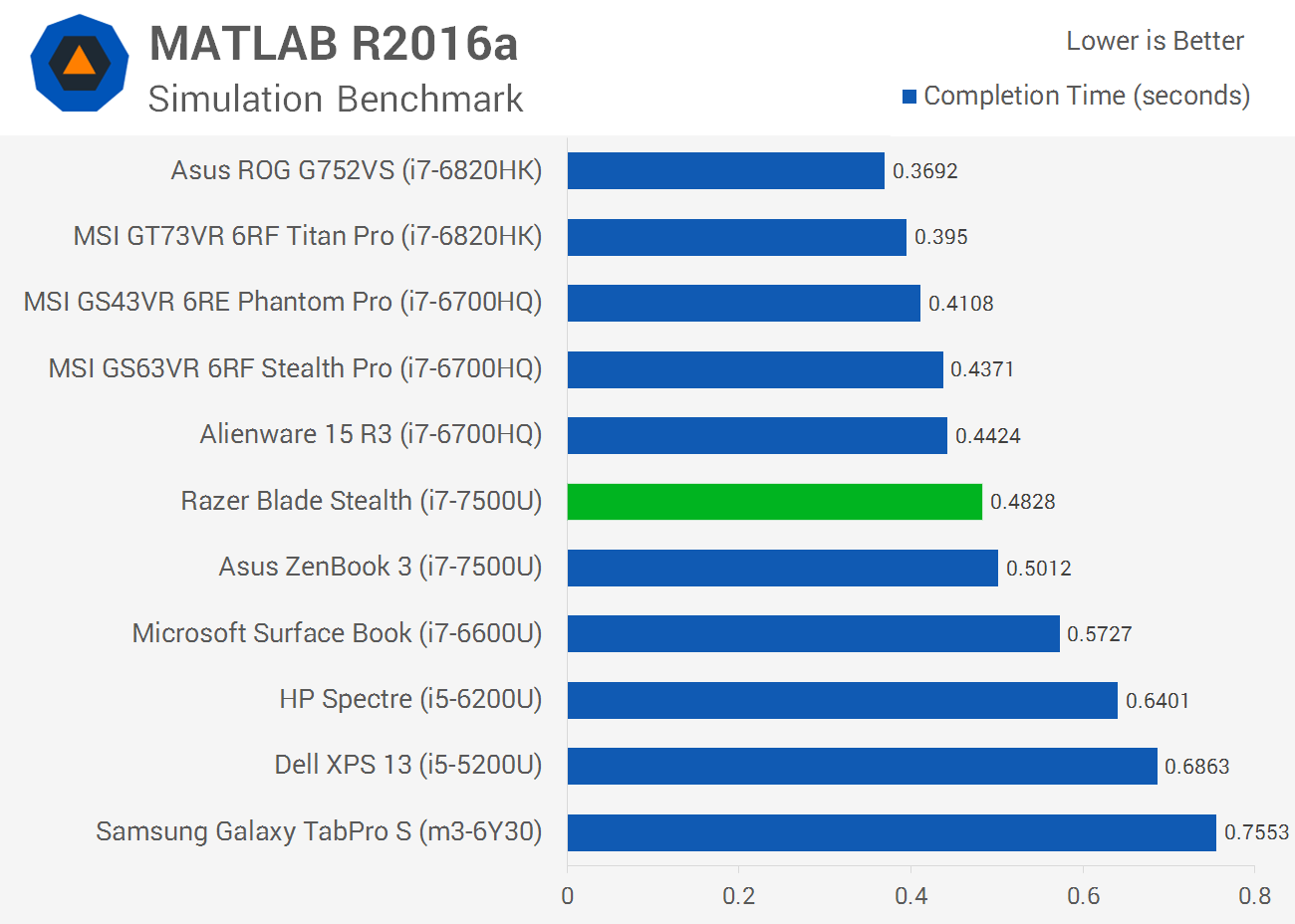
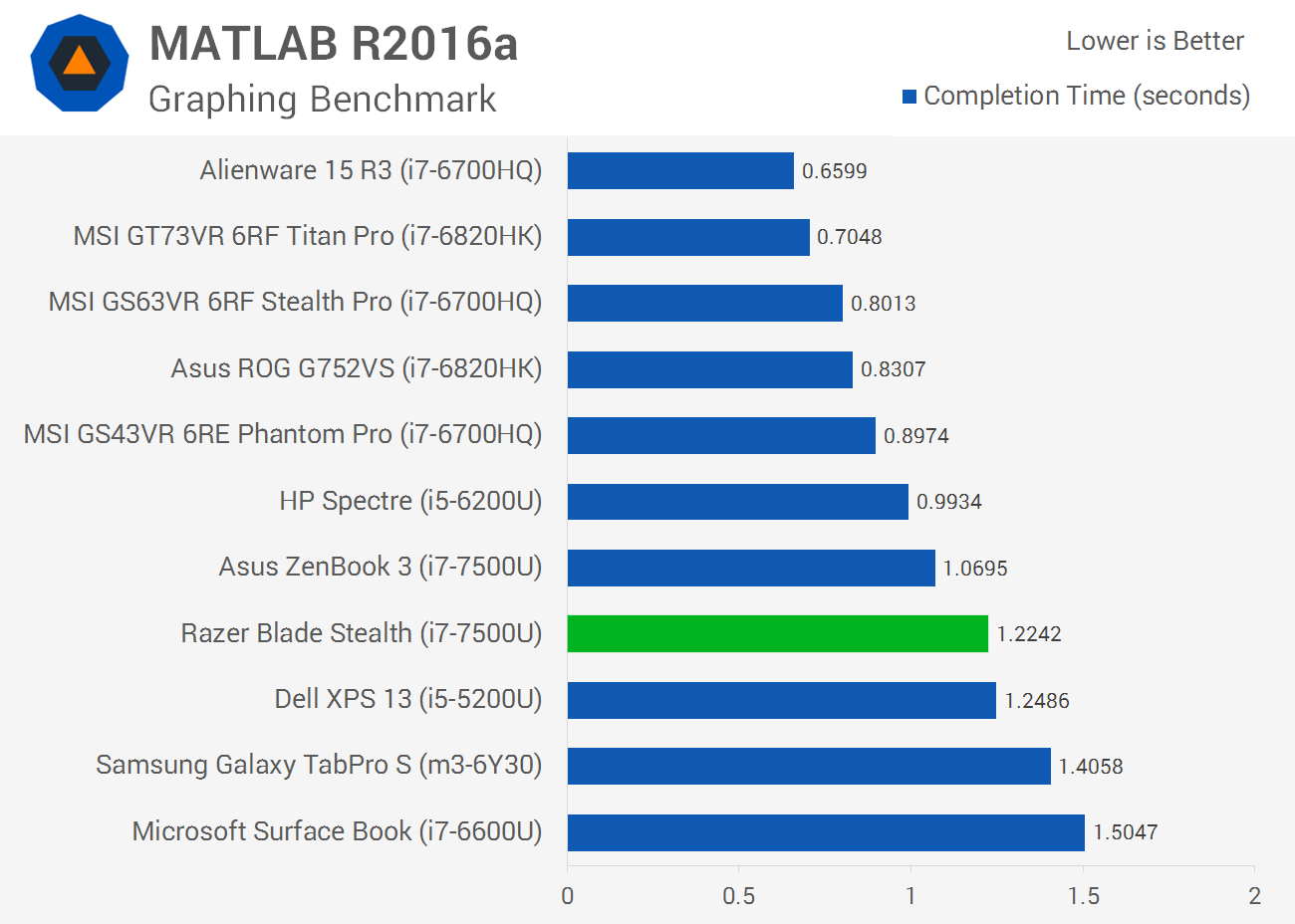
Luckily, here at TechSpot we reviewed the last-generation Blade Stealth with a Skylake Core i7-6500U inside, which provides us with a direct comparison.
The Kaby Lake Blade Stealth is 18 percent faster on average across all the tests we performed. In just CPU-limited workloads, the new Blade Stealth was 13 percent faster in multi-threaded tests and 16 percent faster in single-threaded tests on average. These results aren't surprising, considering the i7-7500U is clocked between 8 and 13 percent higher than the i7-6500U. Single-threaded results slightly exceeded what I was expecting, but not by a significant amount.
The last-gen Blade Stealth isn't the fastest i7-6500U laptop I've reviewed; that crown belongs to the Dell XPS 13. However, the new Blade Stealth is still comfortably faster than the XPS 13, just by a smaller five percent margin. Compared to the Microsoft Surface Book with a Core i7-6600U inside, we're seeing similar performance margins.
These results really aren't good enough to suggest there's much point upgrading from a Skylake laptop to a Kaby Lake laptop. However, if you're using, say, a Broadwell-based Core i5-6200U laptop from a few years ago, upgrading to the Blade Stealth could give you a 30 percent performance improvement, which is decent.
Depending on the test, the Blade Stealth falls around the same performance mark as the Asus ZenBook 3. In CPU-limited workloads, the Blade Stealth was just 1 percent faster, which is essentially within the margin of error.
